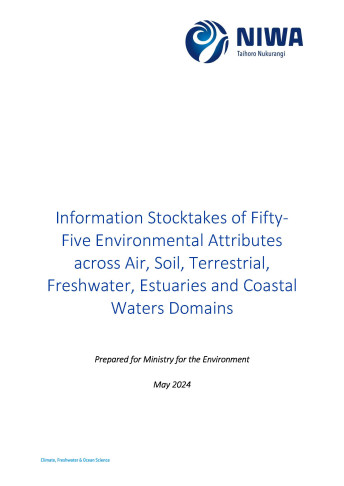Characteristics of our land, water, soil and air, known as attributes, help us understand how our environment is changing and inform how we maintain human health and ecological integrity at acceptable levels.
Characteristics of our land, water, soil and air, known as attributes, help us understand how our environment is changing and inform how we maintain human health and ecological integrity at acceptable levels.
The Ministry for the Environment commissioned 43 researchers from NIWA, Manaaki Whenua Landcare Research, Cawthron Institute and Environet Limited to bring together existing information on 55 environmental attributes.
These attributes are in air, terrestrial, soil, freshwater, and estuaries and coastal waters domains. They cover issues as diverse as wetland extent and light pollution. The information can be accessed either as a full report or attribute by attribute (below).
Related publications
Erodible Soil Stabilisation: Ministry for the Environment Attribute Stocktake
Indigenous Vegetation Cover: Ministry for the Environment Attribute Stocktake
Nuisance Macroalgae in Estuaries: Ministry for the Environment Attribute Stocktake
